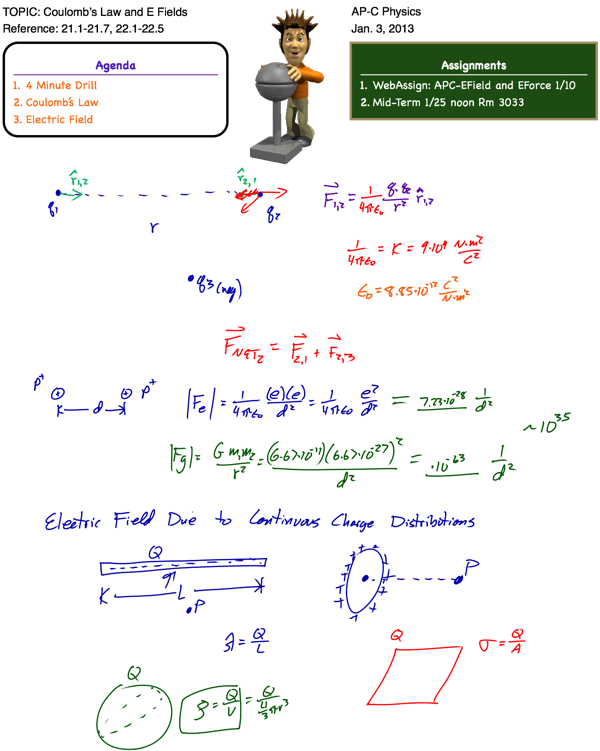
As I was looking over the available note handouts for both our magnetism and electromagnetism units, I wasn’t really happy with any of the materials as a “one-stop, everything-you-need” resource to refer back to for the unit. So, I spent a few days making up some new ones. Check ’em out!

AP-C Magnetism: Independent Study
 As we enter the final phase of our course, you may have noticed that you have been doing more and more independent work. One of our course goals has been to learn how to learn independently. Our culminating activity in this endeavor will involve your undertaking a complete unit independently. Of course, I am available to assist if you get stuck, but would like you to attack the unit on your own, with an understanding of what your learning goals are for this portion of the course.
As we enter the final phase of our course, you may have noticed that you have been doing more and more independent work. One of our course goals has been to learn how to learn independently. Our culminating activity in this endeavor will involve your undertaking a complete unit independently. Of course, I am available to assist if you get stuck, but would like you to attack the unit on your own, with an understanding of what your learning goals are for this portion of the course.
Based on the goals provided, the following requirements and resources are available to you. You are expected to set your own pace and schedule/ration your workload accordingly, based on the understanding that all requirements must be met and turned in at the beginning of class on Friday, April 9, the day of the magnetism exam. All items are to be turned in simultaneously, stapled in a packet or placed in a folder with your name on it, including the attached cover page.
Unit activities include:
Watch MIT 8.02 Physics Lectures (Walter Lewin), available from iTunes U or web search.
Read Tipler 26.1-26.3, 27.1-27.4
Complete WebAssign: APC-Magnetism (turn in hard copy)
Complete Lab: Magnetic Field in a Slinky (formal lab report)
Complete two free response problems (turn in neat, complete solution):
Complete worksheet on Gauss / Ampere go to Battle (turn in)
Complete two quizzes:
Ref. Tipler Ch. 25.1-25.6
Using the capacitor simulation at http://phet.colorado.edu/en/simulation/capacitor-lab and the
AC/DC circuit construction kit at http://phet.colorado.edu/en/simulation/circuit-construction-kitac,
you and your team are to create a simulation lab for future AP-C Physics Students. This lab
should include a purpose, detailed step-by-step procedure, data tables, and appropriate
analysis questions to help students develop an understanding of the key learning objectives for
this activity.
1. One completed lab handout, neatly typed and organized in such a fashion that it could
be immediately handed out to other AP-C physics students for in-classroom use without
further modification. Do not place your names on this copy, but instead attach your
names to it using a yellow sticky note.
2. A second copy of the lab handout, this copy having been filled out completely as if you
were a student working through the lab, and at such a quality level that it can be used as
an answer key. It is to be labeled as “Teacher’s Guide.”
3. Do not staple any of your deliverables. Paper clips will be provided upon request.
 RESOURCES
RESOURCES